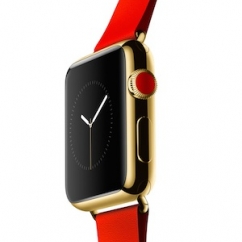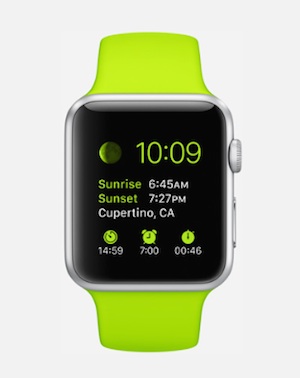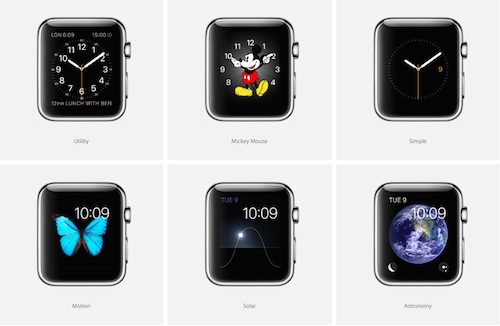Articles and News
Editorial: Why Luxury Jewelers Really Do Need To Pay Attention To The Apple Watch | March 04, 2015 (0 comments)

Cupertino, CA—Apple’s watch finally will debut March 9 in San Francisco. (See the Apple website watch section.) And while you’ll probably never sell a single Apple Watch in your store, its release is relevant to luxury jewelers. Here’s The Centurion’s take:
Apple is a luxury brand. In one survey it ranked as the #2 luxury brand after Louis Vuitton. Its products occupy the luxury space in all the categories where it competes. Apple may have introduced the concept of user-friendly computers for the masses, but it was the Commodore 64 and other low-end PCs that really brought computing to the masses, not Apple’s $2,500 (in 1984) Macintosh. Likewise, Android devices dominate the low-end smart phone category. Globally, there are far more Androids than iPhones in use, but the iPhone carries a cachet that the Android doesn’t have. (An article on Fusion.net speculates that’s why the entry-priced iPhone 5C flopped: carrying one signaled that you couldn’t afford a 5S. But the 5S also has better features for only $100 more, so it’s possible that the price-to-value equation was lacking along with snob appeal.)
Apple executives know the heritage-brand luxury market is different from the technology market. That’s why they hired some non-tech heavy hitters who know the luxury sphere: Angela Ahrendts and Paul Deneve, former CEOs of Burberry and Yves St. Laurent, respectively, and Patrick Pruniaux from TAG Heuer watches.
And where are the first ads for the Apple Watch breaking? In a major ad campaign in Vogue magazine’s March issue. Vogue. Not Wired, or in some nerdy tech journal. Putting the watch in a luxury environment like Vogue almost automatically positions it as a luxury fashion accessory, albeit one that middle-income consumers can afford.
Apple’s core mission has been to build products for (almost) everyone, so the only way to go up-market without alienating your core customer is to add in some exclusive things that only a few can afford.
The Apple Watch Edition (shown top of page in 18k yellow gold) will be one. The Fusion article says the Edition’s functionality won’t be any different from the standard Apple Watch or Sport watch, but the wrapping definitely will be: 18k gold, high-end materials for the straps, and a patina of luxury. The Apple site didn’t list prices for any of its models at press time, but basic models are expected to start at $349. Mid-tier editions with better strap and bracelet options could push the price near (or even over) $1,000, but the Edition reportedly will start around $5,000 or $10,000, depending on which observer’s viewpoint you believe.

An example of how the Apple Sport watch can be configured, above. Below, a gallery of different options for the face. All models are customizable and interchangeable straps are part of the design.

A pricey top model makes a basic model more enticing. Even if you can’t afford the gold Edition, $350 still gets you into the club.
The advantage for jewelers, as we’ve discussed in earlier articles, is that anything that gets consumers to wear a watch is good, because eventually they’re going to add other watches to their wardrobe. (Remember the key word is “wardrobe.”)
And even if you don’t perceive a $350 watch as luxury, the Apple customer wearing it does, which means they’re predisposed to want other luxury goods. Enter the jeweler.
Another advantage is the ad campaign breaking in Vogue. That sends a strong message about the importance of women to the category, and anything that gets fashion-loving women in the mood to buy jewelry and watches is good for the industry.
Some inherent disadvantages in the product itself also will prove to be advantageous for jewelers. Mark Sullivan, gadget editor for Venture Beat, believes technology will keep the Edition from being a top-tier luxury timepiece. Gadgets get outdated very quickly, and within a few years even a firmware update isn’t going to bring first-generation Editions up to current technological snuff, so only the super-rich who can afford to toss out a $10,000 timepiece would be willing to plunk down the cash to own one.
The short shelf life also impacts the resale value of an Apple Watch vs. other luxury timepieces. A good watchmaker can restore an old Rolex or Patek as good as new. But unless Apple figures out a way to swap out the functional part of the watch from its 18k housing, it’s never going to be good as new. And unless a rabid collector’s market for first editions unfolds—not highly likely—it’s only going to be worth the scrap value of the gold housing. Original Macintosh computers today fetch about $1,000 on the collector’s market, unless you have an extremely rare prototype, in which case it’s probably already in a museum somewhere.
So why should jewelers pay close attention to the Apple watch? It’s worth paying attention to anything Apple does. Apple has a way of figuring out what the market wants even before the market knows. Apple is cool and has cachet with everyone, not just Millennials, though they’re of course the generation jewelers want to attract ASAP. And if Apple truly succeeds in breaking into the ultra-luxe market without alienating the middle-class masses, it’s going to be unstoppable.







